Emergers
{{start}}
As the pupa or sub-imago of Mayflies, Caddis, Midges, Stoneflies, Dobson flies etc. move to and through the surface of the water to hatch they are referred to as emergers and when large numbers go through this process at the same time it is referred to as a hatch. When fish are feeding on emergers it is important to be fast and accurate in your casting and to match the form and function of the natural. When the naturals are large enough in individual size one very successful technique is to fish an emerger pattern on top as both a fly and an indicator and a nymph or midge pupa suspended just below it. Hits are often on the dead drift or on the lift.
{{end}}
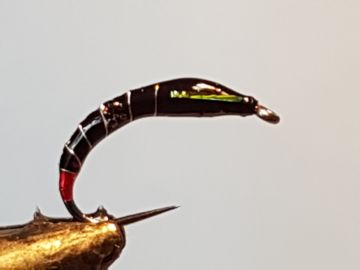
{{+1}}Epoxy midge – black with hot butt & UV cheeks{{-1}}
{{start}}
When Chironomids are around they tend to be around in large numbers and trout become quickly switched on and gorge on them. There are number of techniques to target chironomid feeders and one of my favourite is to fish three chironomid imitations with the heaviest on the point with a long leader on a floating line and fish relatively static. You will be surprised how many fish find your flies.{{end}}

{{+1}}Muskins PTN{{-1}}
{{start}}
This is very popular Northern hemisphere fly and whist it more popular in still water it also has its uses in running water. Appealing to fish that are on mixed diet that includes mayfly nymph and midge.{{end}}
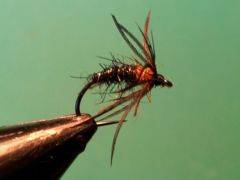
{{+1}}Tiger bibio{{-1}}
{{start}}
This combination of my Bibio variant and Peter Walsh's tiger midge. Fish it in the same way as you would fish a bibio ... often it will come up trumps.{{end}}
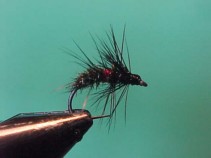
{{+1}}Royal Bibio{{-1}}
{{start}}
Bibios and bibio variants are amongst my favourite ten flies. This royal bibio version is always worth a swim, particularly if there are midge or damsels around. It's a variation of the original bibio except that the dubbed body has been replaced with the same sort of body you find on royal wulffs and hair-winged-royal-coachman to name just a few.{{end}}
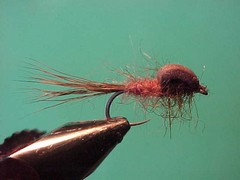
{{+1}}Floating nymph{{-1}}
{{start}}
This nymph applies elements of each of these two principals of science. The materials are all as buoyant as possible. This includes the tail which is deer hair and of course "hollow' and the closed cell foam which has tiny bubbles of air trapped within its membrane. It also has a reasonable "foot print" made up of the tail, and teased out seals fur body and thorax. Seals further adds a further benefit to the fly in that with a couple of brisk false casts it easily sheds water.{{end}}
{{+1}}Parasol emerger{{-1}}
{{start}}
The authors of “The Fly Tiers Bench-side Reference” previewed this new concept in emerger flies in the Fall 2002 issue of Fly-fishing & Tying Journal. Its shown here tied on a “Steve's Nymph” but you can easily adapt this concept to your favorite nymph.{{end}}
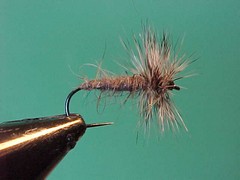
{{+1}}Gray duster{{-1}}
{{start}}
The original gray duster was designed as a midge cluster fly and consequently has no tail. It was one of the first flies I was introduced to and is easy to tie and works well on fish when they are taking midge on or near the surface. Because of its hackle it floats well and is capable of supporting a mide pupa suspended sub surface.{{end}}
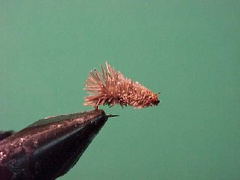
{{+1}}Wedge sedge{{-1}}
{{start}}
This is just the simplest imitation of a snow flake caddis laying on the surface of the water. The shape is right and it floats well.{{end}}
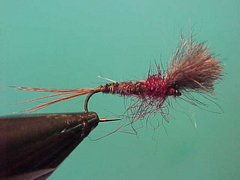
{{+1}}Possum emerger{{-1}}
{{start}}
There are plenty of possum emergers out there. Generally they have a nymph like body and then either a brush type wing or a bud type wing. I like brush type wing emergers better as dense wing traps more air and consequently they float better. The little thorax of seals fur is also good because it sheds water with a flick of the fly.{{end}}














